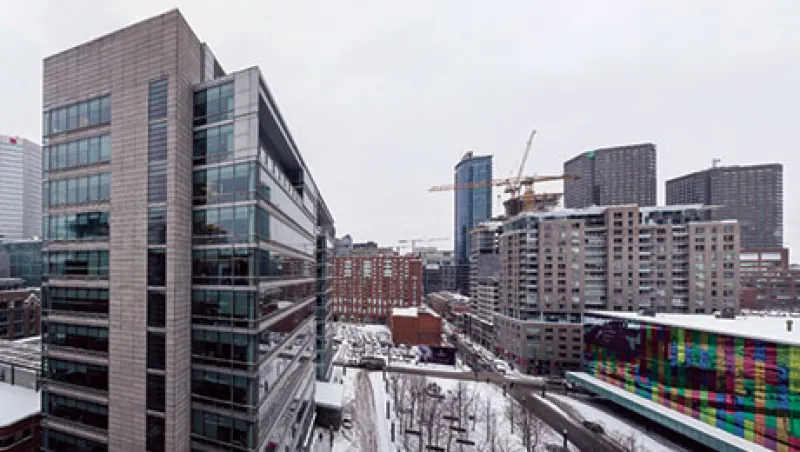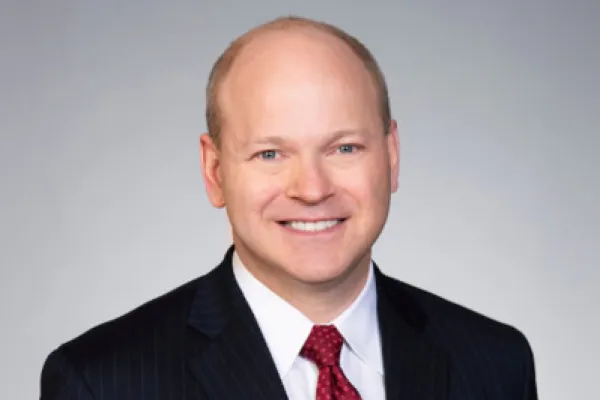On April 22, 2016, Caisse de dépôt et placement du Québec made a striking announcement. The Montreal-based investor, which has managed public pension and insurance assets since 1965, revealed ambitious plans to build, own, and operate a C$5.5 billion ($4.2 billion), 42-mile, 24-station light-rail system in its home city. What’s more, the pension manager unveiled an innovative scheme to pay for the project: Rather than follow the usual infrastructure financing road map, in which public pension funds and established infrastructure managers invest together in, say, an airport or a highway, Caisse, with C$255 billion under management, would invest a stunning C$3.3 billion of its own assets in the rail system, with the rest of the money coming from the province of Quebec and the Canadian federal government.
“It’s never been done before,” Caisse CEO Michael Sabia says of what he calls a public-public partnership. It is also the debut project of new Caisse investment subsidiary CDPQ Infra, which was designed to follow the lead of the pension manager’s real estate unit, Ivanhoé Cambridge.
The bold move is the latest in a series of major overhauls enacted by Sabia since he joined the pension in March 2009, after the global financial crisis had blown a C$40 billion hole in the pension manager’s portfolio — a full quarter of its assets. Desperate for a turnaround, then–Quebec premier Jean Charest charged Sabia with transforming the fund into an investment machine that could withstand market shocks. The move was both audacious and unpopular, as there had never been a native-English speaker leading Caisse and Sabia did not have an asset management background. But the new CEO, who is fluent in French, was undaunted and immediately put an ambitious plan into place that included firing both employees and external asset managers, simplifying an overly complex portfolio, changing the organization’s culture and mind-set, and restructuring its three real estate subsidiaries.
The launch of CDPQ Infra is the latest manifestation of Sabia’s vision. Although Canadian pension funds, such as the Ontario Teachers’ Pension Plan and the Ontario Municipal Employees Retirement System, are well known for directly copurchasing highways and rail lines — including the 68-mile rail link between London and the Channel Tunnel — these are so-called brown-field investments: They target buildings, highways, and ports that have already been built and need rehabilitation. None has taken on a large, start-from-scratch green-field building project because of the risks of such an undertaking. “I would say it’s pretty rare,” agrees Yvan Breton, a partner in Mercer’s Canadian wealth management business and the firm’s head of fiduciary management in Canada.
It’s also risky, some experts say. “It’s a very complex and hazardous asset class,” warns Roger Urwin, global head of investment content for advisory firm Willis Towers Watson. He estimates that global infrastructure investments total between $500 billion and $1 trillion. Only 3 to 5 percent of the world’s pension funds regularly allocate to the asset class. And as the world’s largest pensions join infrastructure managers in seeking the best opportunities, the field is getting crowded.
Sabia sees it differently. For starters, he believes — as do many in the investment world — that in the future traditional equity and bond markets will not deliver the returns necessary to fund pension liabilities. “More and more, you just want to take asset risk,” Sabia says. “Markets aren’t going to pay much, despite the effervescence in the market post-Trump.”
More important, Sabia’s decision to step up infrastructure investing and create a subsidiary business to build, own, and operate projects was born of his deep conviction that operations are a source of value. Unlike most pension fund executives, who typically spend their careers in pension management or on the asset management side, Sabia served as CEO of Bell Canada International and CFO of Canadian National Railway Co., and that experience contributed to his belief in the importance of building long-term asset value rather than reaping short-term investment returns.
“You have to treat the principles of investing like an industrial company,” he asserts. “It’s in the operations that you create durable value, not with financial engineering.”
Sabia has spent his career putting his philosophy into action. He was born in St. Catharines, Ontario, in 1953, and earned a BA in economics and politics from the University of Toronto and graduate degrees in economics and politics from Yale University. After working for the Canadian government as a senior official in the Department of Finance and the Privy Council Office, he joined government-owned Canadian National Railway in 1993 and worked his way up to CFO. He facilitated a financial turnaround at the company and helped take it public in 1995.
In 1999, Sabia left for Bell Canada, the country’s largest communications company; in 2002 he became CEO of its parent, BCE, where he faced a different challenge: The telecommunications business needed to change its approach to the double threats of cable and the Internet as the dot-com bubble was ending.
Sabia’s tenure at BCE came to an end in the heat of a takeover battle between Ontario Teachers and U.S. private equity firm KKR & Co. for control of the company, which the pension plan eventually won. In 2008, Sabia’s job became a casualty of the power struggle between the investors, but he walked away with a cool $21 million bonus.
The timing was fortuitous. By early 2009 the devastated Caisse, whose assets had sunk to C$120 billion, needed a new CEO. After province premier Charest tapped Sabia for the job, the appointment was officially made by the board of directors and ratified by the Quebec government. It was then that Sabia embarked on one of his biggest career challenges yet.
Just days after joining Caisse, Sabia stood in the soaring, glass-enclosed atrium of the pension manager’s headquarters and addressed his new employees, who had been badly shaken by the fund’s losses. “The lack of sense of pride inside the building was terrible,” recalls Macky Tall, CEO of CDPQ Infra. “Employees, who were traditionally proud to work here, were almost ashamed to say they worked here.”
Sabia broke the ice by saying he needed then–U.S. president Barack Obama, a gifted speaker, to help him find the right words for the occasion. “I’ve done other things, but this is the biggest hour of my career,” Sabia told the employees. “The Caisse is a great place filled with great potential, and that’s why I am here.”
The new CEO drew inspiration from Caisse’s headquarters, the Parquet, a cathedral-like modern structure built in 2003. “The space symbolized the potential of the institution that had lost C$40 billion,” he explains. “It symbolizes ambition, what we can accomplish.”
Sabia needed plenty of inspiration as he set out to rebuild the once-revered pension manager. He’d taken over an organization that was managing the assets of 25 mostly public pension funds (it now manages 34) and insurance plans. The largest of these are the Government and Public Employees Retirement Plan, Fonds d’amortissement des régimes de retraite, Fonds du Régime de rentes du Québec, and a pension plan for the Quebec construction industry.
He faced tough challenges at the outset. “I remember quite vividly a day in late-April 2009 when I had to tell five members of the executive committee that they didn’t have a future here,” he says. “Senior people had to go. It’s very rare you can get someone to do something differently.”
And Sabia definitely wanted his senior people to do things differently, building on his philosophy of creating long-term asset value. First and foremost, he asked employees to start “investing like an owner” and to see their roles as “builders, not traders.”
Because he believed he had waited too long to begin housecleaning at both BCE and the Canadian railway, Sabia moved fast, traveling to France to entice Roland Lescure, then deputy CEO and CIO of Groupama Asset Management, to take on the CIO job at Caisse. Starting in October 2009, Lescure began tackling the job of portfolio simplification, and a new round of layoffs and hirings began.
“When I got here, the magic word was ‘diversification,’” the French-born former government economist and asset manager explains. “I called it de-worsification: When you own a bit of everything, you don’t own anything. It took a lot of reprogramming of people, a lot of change.”
Caisse’s hedge fund portfolio, invested in 130 different funds, was a perfect example of overdiversification; Lescure slashed it to 25 funds. When Sabia questioned the need to invest in any hedge funds, Lescure told him that having access to top asset managers’ market views would help him understand activity in the markets. “We learn about the profession of asset management,” says the CIO, who is also co-head of the investment risk committee and serves on Caisse’s executive committee. “They’re a window on the world.” These managers can also serve as a canary in the coal mine when it comes to spotting crowded trades: “If all hedge funds are doing the same thing, we probably shouldn’t be doing it,” Lescure says.
A firm adherent of active management — 90 percent of the portfolio is managed in-house — Sabia applied his asset-owner philosophy and belief in concentrated holdings to the traditional equity portfolio as well. “Four of us were in Michael’s office,” recalls Lescure, referring to a meeting that included head of risk Claude Bergeron and head of client servicing Bernard Morency. For two hours one afternoon in the fall of 2011, over many cups of coffee, the team decided to liquidate the equity portfolio’s assets and create an entirely new, C$10 billion portfolio. Dubbed the high-quality portfolio, the equity book was designed to be benchmark-agnostic — a big reversal in approach from that of the former regime at Caisse. “It was a bit of a leap of faith to be taken,” Lescure says. To get there, the portfolio’s equity index funds were liquidated by approximately $1 billion each month over an eight-month period, from January through August 2012.
Sabia also took issue with the traditional practice of overweighting and underweighting securities in an equity portfolio. “People tell themselves this is active management, but why own companies you don’t like just because they are in the index?” he asks.
The new public equity portfolio, which has grown to C$34 billion, holds only 60 to 70 securities. “The best risk management is knowing the assets you invest in deeply,” Sabia says, likening the equity book to the pension manager’s infrastructure and real estate investments, which are also large and concentrated. “A lot of institutional investors have a lot of relatively smaller positions in companies,” he explains. “We don’t really buy that. We seek to take big positions.”
The early success of the new equity portfolio, fueled in part by the postcrisis recovery, went a long way toward solidifying the new CEO’s reputation and garnering respect from Caisse employees. Coming from outside both asset management and French-speaking Quebec, Sabia had a lot of resistance to overcome, although the financial crisis allowed him some leeway to experiment without much pushback.
“People did say, ‘Why the hell did they appoint this guy?’” he admits, with equanimity. “To make a successful transformation, you have to show the organization success stories. Most people didn’t think we could do it.”
The skeptics were proved wrong. Caisse’s portfolio began 2009 with a negative 0.3 percent return and shot up to 10.4 percent by the end of the year, while assets rose to C$131.6 billion. This improvement was driven in part by a 13.7 percent reduction in operating expenses and external management fees. The Sabia regime was beginning to pay off.
Along with the public market, hedge fund, and infrastructure portfolios, the real estate group at Caisse also was due for a major overhaul. Like so many investment funds, it had gotten caught in the asset-backed-securities meltdown and mortgage debacle during the global financial crisis, contributing to the pension manager’s 25 percent asset loss.
In 2009 three separate entities owned and operated Caisse’s office buildings and retail and residential assets. Sabia tapped Daniel Fournier, a Montreal native who had attended Princeton University and Oxford University as a Rhodes scholar, to head a merged unit that took the best-known name of the three: Ivanhoé Cambridge.
Fournier, a longtime real estate investor and board director at Canadian corporations, explains, “We had a great group with expertise, but no one knew who we were.” He was hired in June 2010, a time he describes as the beginning of phase two of Sabia’s turnaround: the postcleanup phase, in which the pension manager made big decisions about the kind of firm it wanted to build. Having worked at Caisse’s office-building subsidiary, Fournier easily moved into the CEO role at the merged Ivanhoé Cambridge.
Sabia believes in the importance of standing out in the crowded real estate market. “Job one was do good deals,” he recalls. “The market looks at that and says, ‘That’s smart.’” He wanted to signal that Ivanhoé Cambridge was a serious, sophisticated real estate investor. “When you start doing that, the phone starts ringing,” he says. “If Blackstone has a good idea, we want them to think of us.”
After merging the three real estate entities, Fournier, taking the lead from Sabia, established a policy of investing in only the top properties in leading cities, culling secondary and tertiary holdings from a portfolio that includes Canadian malls and more office space in New York than in all of Canada. U.S. investments now include only the markets of Boston, Chicago, Denver, Los Angeles, New York, San Francisco and Seattle.
Today the real estate business has close to 500 properties in its C$55 billion global portfolio. Among the most recently acquired are Stuyvesant Town–Peter Cooper Village, an 80-acre, 56-building residential complex in New York that Ivanhoé Cambridge co-owns with Blackstone Group; 25 multiresidential properties in San Francisco, jointly owned with Veritas Investments; and New York’s Three Bryant Park office tower, a $2.2 billion transaction with Callahan Capital Properties.
Ivanhoé Cambridge is also a developer. The subsidiary recently signed a joint investment, with Dutch pension manager APG, in Chongbang Group, a Shanghai-based developer, owner, and operator. Other projects include the DUO towers on Paris’s Left Bank and the Bay Park Center in Toronto’s business district. Fournier says he has learned from these co-investments, particularly Ivanhoé Cambridge’s project with Chongbang CEO Henry Cheng to build a mall in Shanghai that will feature entertainment and restaurants. “He’s helping us with our Canadian assets,” notes Fournier, pointing to a C$1.6 billion mall in British Columbia with a large Chinese clientele.
After years of investing billions of pensioners’ money in global real estate, Fournier has learned the importance of humility. After the group tried unsuccessfully to expand its retail model into Russia, he realized: “You need to know who to deal with and who not. Today we’re not going to do it all ourselves; it’s not just their brains and our money.”
Ivanhoé Cambridge and its strategy of investing at every stage of the real estate development chain — designing, developing, building, owning, and managing properties — inspired the creation in 2015 of CDPQ Infra, the freestanding infrastructure business lifted out of Caisse’s private equity portfolio.
When he arrived at Caisse, Sabia “came with a view of ‘Where do we have the capacity to build a world-class business?’” explains CDPQ Infra CEO Tall, who served as the pension manager’s infrastructure director from 2004 until his promotion last year. He has ambitions of his own. “When we grow up, we’ll be like Ivanhoé Cambridge,” he jokes.
In 2009 the infrastructure portfolio stood at about C$2 billion and was managed by Tall and seven other people. Today the staff numbers 35, including geologists and mining engineers, and that number could stretch to 40.
“Fundamentally, we are looking for — as are other institutional investors — ways to redeploy capital that we had traditionally invested in fixed income, largely bonds,” Sabia says, explaining the push into infrastructure. “When we look at world interest rates and where they are likely to go, we’re concerned that they’re going to be very, very low.” Infrastructure is an important asset class, he says, because it provides a low risk of capital loss, a steady stream of income, and a level of return that is meaningfully larger than fixed income could deliver. It also offers inflation protection, Tall adds.
Caisse is not the first Canadian pension fund to roll out an investment subsidiary. The Ontario Municipal Employees pension plan, for example, created Borealis in 2004 to invest in infrastructure and private equity; it now has close to C$15 billion, or 16.4 percent of its total portfolio, in infrastructure investments. Not to be outdone, CDPQ Infra is bolting out of the gate with C$14 billion and an ambitious target of hitting between C$30 billion and C$35 billion within four to five years.
How did the Canadians become such big infrastructure investors? One possible reason is the foreign property rule in Canada’s Income Tax Act, which in 1971 effectively placed a 10 percent ceiling on the proportion of assets that Canadian registered pension plans and registered retirement savings plans could invest outside the country, says Mercer’s Breton. Seeking investments beyond traditional stocks and bonds, pension fund officials looked to real estate, private equity, and infrastructure.
Canada’s foreign investment limit was raised to 20 percent between 1990 and 1994, increased to 30 percent between 2000 and 2001, and removed altogether in 2005. The country’s pension funds became global investors and have not looked back.
Today Caisse’s infrastructure investments span the globe. The pension manager tested the green-field waters with its development of Terminals 2 and 5 at London’s Heathrow Airport and the Victorian Comprehensive Cancer Center in Melbourne, Australia. Just before Christmas, Caisse signed a partnership for a 45 percent ownership stake in Dubai World, the third-largest port in the world. Other recent projects include a deal with a consortium of Mexican institutional investors to invest $2.8 billion in a wide range of projects over the next five years; an A$1.2 billion ($920 million) investment in a consortium that holds the lease of TransGrid, Australia’s largest transmission network; a €100 million ($106 million) investment in Paris-based engineering firm Spie; and a 21 percent stake in Azure, a leading solar-power generator in India.
It seems the only thing that can hold CDPQ Infra back is fierce competition.
“You get really intense competition for good-quality infrastructure assets,” agrees Sabia. “You see prices go up. It’s a crowded field.” According to the 2017 Preqin Global Infrastructure Report, 54 percent of infrastructure managers say it is more difficult to spot attractive opportunities than it was 12 months ago, with only 2 percent finding it easier. Rising prices and valuations, and increased competition from pension funds, are cited as factors heightening the competition.
How does Caisse plan to differentiate itself? Sabia thinks he has the answer. “Let’s take on a green-field project. We’ll propose it, plan it, build it, and operate it,” he says. Building a light-rail system in Caisse’s own backyard will prove the pension manager can do it, the CEO explains. “Then we’ll take it on the road and do it elsewhere.”






